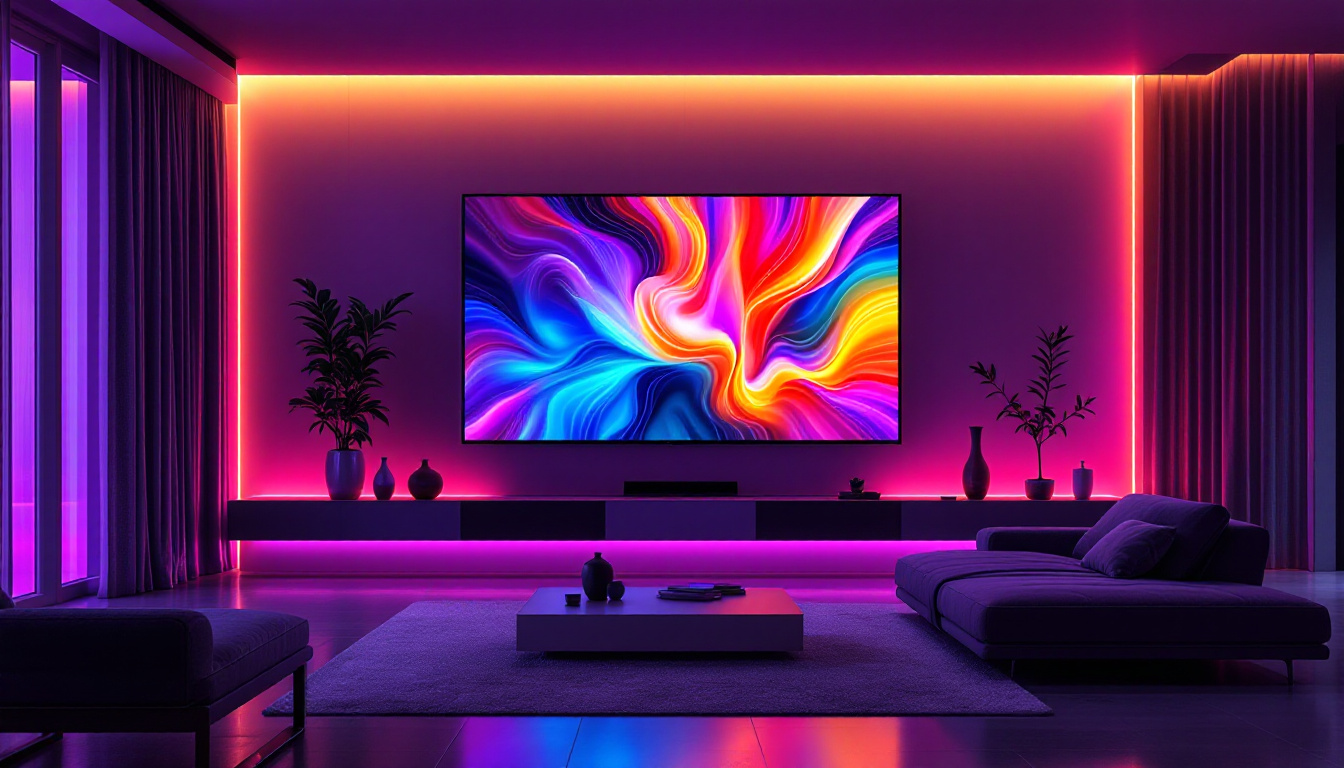What Is Better LED Or LCD: LED Display Explained
In the world of display technology, two terms often come up: LED and LCD. While they may seem interchangeable at first glance, they represent different technologies that have distinct characteristics, advantages, and disadvantages. Understanding these differences can help consumers make informed decisions when purchasing televisions, monitors, or other display devices. This article will delve into the intricacies of LED and LCD displays, exploring their functionalities, benefits, and limitations.
Understanding LCD Technology
LCD, or Liquid Crystal Display, is a technology that utilizes liquid crystals sandwiched between two layers of glass or plastic. These crystals manipulate light to produce images. The fundamental principle behind LCDs is that they do not emit light by themselves; instead, they rely on a backlight to illuminate the display.
How LCD Displays Work
In an LCD screen, the liquid crystals change their orientation when an electric current is applied. This change in orientation affects how light passes through the crystals, allowing for the creation of images. The backlight, typically made of fluorescent tubes or LEDs, shines through the liquid crystals, illuminating the pixels and creating the desired colors.
The combination of the backlight and the liquid crystals allows for a wide range of colors and brightness levels. However, the quality of the backlight can significantly impact the overall picture quality. For instance, traditional LCDs with fluorescent backlighting often struggle with contrast and color accuracy compared to their LED counterparts. Moreover, advancements in technology have led to the development of IPS (In-Plane Switching) and VA (Vertical Alignment) panels, which enhance viewing angles and color reproduction, making them ideal for professional applications such as graphic design and video editing.
Advantages of LCD Displays
One of the primary advantages of LCD technology is its thin profile and lightweight design, making it an excellent choice for various applications, including televisions, computer monitors, and portable devices. Additionally, LCDs are generally more energy-efficient than older technologies like CRTs (Cathode Ray Tubes).
Another benefit is the cost-effectiveness of LCD displays. They are widely produced and available, which helps keep prices competitive. Furthermore, LCD technology has been around for a while, leading to a wealth of knowledge and experience in manufacturing and optimizing these displays. The durability of LCD screens is also noteworthy; they are less prone to screen burn-in compared to OLED displays, making them a reliable choice for applications that require static images for extended periods, such as digital signage. Additionally, the ability to produce large screens at a relatively low cost has made LCD technology the go-to option for many commercial and consumer applications, further solidifying its place in the market.
Introduction to LED Technology
LED, or Light Emitting Diode, is often used as a backlighting technology for LCDs, but it can also refer to displays that utilize LEDs as their primary light source. In this context, LED displays are a type of LCD display that uses LEDs for backlighting instead of traditional fluorescent lights.
How LED Displays Work
LED displays operate on the same principles as LCDs but with a crucial difference in backlighting. There are two main types of LED backlighting: edge-lit and full-array. Edge-lit LED displays have LEDs positioned along the edges of the screen, while full-array LED displays have a grid of LEDs behind the entire screen. This arrangement allows for better control of brightness and contrast.
In full-array LED displays, local dimming technology can enhance contrast by turning off specific sections of the backlight, resulting in deeper blacks and brighter whites. This feature is particularly beneficial for viewing content in dark environments.
Advantages of LED Displays
LED displays offer several advantages over traditional LCDs. One of the most significant benefits is improved picture quality. The use of LEDs for backlighting allows for higher brightness levels, better contrast ratios, and more vibrant colors. This makes LED displays particularly appealing for watching movies, playing video games, or viewing high-definition content.
Moreover, LED displays tend to consume less power than traditional LCDs, especially when using edge-lit technology. This energy efficiency not only reduces electricity bills but also contributes to a smaller carbon footprint.
Comparing LED and LCD Displays
While LED displays are technically a subset of LCD technology, the term “LED” is often used to highlight the advantages of modern backlighting methods. To better understand the differences, it is essential to compare their key features, including picture quality, energy efficiency, and cost.
Picture Quality
When it comes to picture quality, LED displays generally outperform traditional LCDs. The enhanced brightness and contrast ratios provided by LED backlighting result in sharper images and more vivid colors. Additionally, the local dimming feature in full-array LED displays allows for greater control over light output, making it possible to achieve deeper blacks and brighter highlights.
In contrast, standard LCDs with fluorescent backlighting can struggle with uniformity and color accuracy, particularly in darker scenes. This disparity makes LED displays the preferred choice for consumers seeking the best visual experience.
Energy Efficiency
Energy efficiency is another area where LED displays excel. LED technology consumes less power than traditional fluorescent backlighting, making it a more sustainable option. This efficiency is particularly noticeable when comparing edge-lit LED displays to older LCD models, which can draw significantly more power.
Furthermore, the lower energy consumption of LED displays translates into reduced heat generation, which can prolong the lifespan of the display and improve overall performance.
Cost Considerations
Cost is often a significant factor in purchasing decisions. Traditional LCDs are typically less expensive than their LED counterparts due to the older technology and lower manufacturing costs. However, as LED technology has become more mainstream, the price difference has narrowed considerably.
Consumers should consider their budget alongside their desired features. While LED displays may have a higher upfront cost, their superior picture quality and energy efficiency can lead to long-term savings and a better viewing experience.
Applications of LED and LCD Displays
Both LED and LCD displays have found their way into a variety of applications, ranging from consumer electronics to professional environments. Understanding where each technology excels can help consumers make informed choices based on their specific needs.
Consumer Electronics
In the realm of consumer electronics, LED displays are prevalent in televisions and computer monitors. The superior picture quality and energy efficiency make them a popular choice for home entertainment systems. Additionally, many smartphones and tablets utilize LED technology to provide vibrant displays that enhance user experience.
On the other hand, traditional LCDs can still be found in budget-friendly devices, where cost is a primary concern. These displays are often sufficient for basic tasks, such as browsing the internet or watching standard-definition content.
Professional Applications
In professional settings, the choice between LED and LCD displays often depends on the specific requirements of the task at hand. For graphic design, video editing, or any application where color accuracy is critical, LED displays are typically favored due to their superior color reproduction and contrast capabilities.
Conversely, traditional LCDs may still be used in environments where high-end performance is not necessary, such as basic office tasks or data entry. The lower cost of these displays can make them an attractive option for businesses looking to equip multiple workstations without breaking the bank.
Future of Display Technology
As technology continues to evolve, the landscape of display technology is also changing. Innovations in OLED (Organic Light Emitting Diode) and MicroLED technologies are beginning to challenge the dominance of both LED and traditional LCD displays.
Emergence of OLED Technology
OLED displays offer several advantages over both LED and traditional LCDs. Unlike LCDs, OLED panels do not require a backlight, as each pixel emits its own light. This allows for true blacks, as individual pixels can be turned off completely, resulting in stunning contrast ratios and vibrant colors.
However, OLED technology is still relatively expensive and may not be as durable as LED or LCD displays, particularly in terms of burn-in issues. As manufacturing processes improve and costs decrease, OLED may become a more viable option for consumers.
MicroLED: The Next Frontier
MicroLED technology is another emerging trend that promises to revolutionize display technology. Similar to OLED, MicroLED displays consist of tiny individual pixels that emit their own light. This technology offers the potential for even greater brightness, contrast, and energy efficiency than current LED and OLED displays.
As MicroLED technology matures, it could redefine the standards for display quality, offering consumers a new level of visual experience. However, like OLED, the technology is still in its infancy and may take time to become widely available and affordable.
Conclusion: Making the Right Choice
When deciding between LED and LCD displays, it is essential to consider various factors, including picture quality, energy efficiency, and cost. While LED displays generally offer superior performance and are becoming increasingly affordable, traditional LCDs still have their place in the market, particularly for budget-conscious consumers.
Ultimately, the choice between LED and LCD will depend on individual preferences and specific use cases. For those seeking the best visual experience, LED displays are often the preferred option. However, traditional LCDs remain a viable choice for basic needs and budget constraints.
As technology continues to advance, consumers can expect even more options and innovations in the display market. Staying informed about the latest developments will help ensure that the right choice is made for both personal and professional applications.
Discover Cutting-Edge LED Displays with LumenMatrix
Ready to elevate your visual experience with the latest in LED display technology? Look no further than LumenMatrix, a pioneer in crafting LED displays that bring your content to life. Whether you’re in need of an Indoor LED Wall Display, a dynamic Outdoor LED Wall Display, or specialized solutions like Vehicle LED Displays and LED Sports Displays, LumenMatrix has you covered. Our mission is to transform visual communication, ensuring your message resonates with stunning clarity. Don’t settle for less—check out LumenMatrix LED Display Solutions today and see the difference for yourself.































